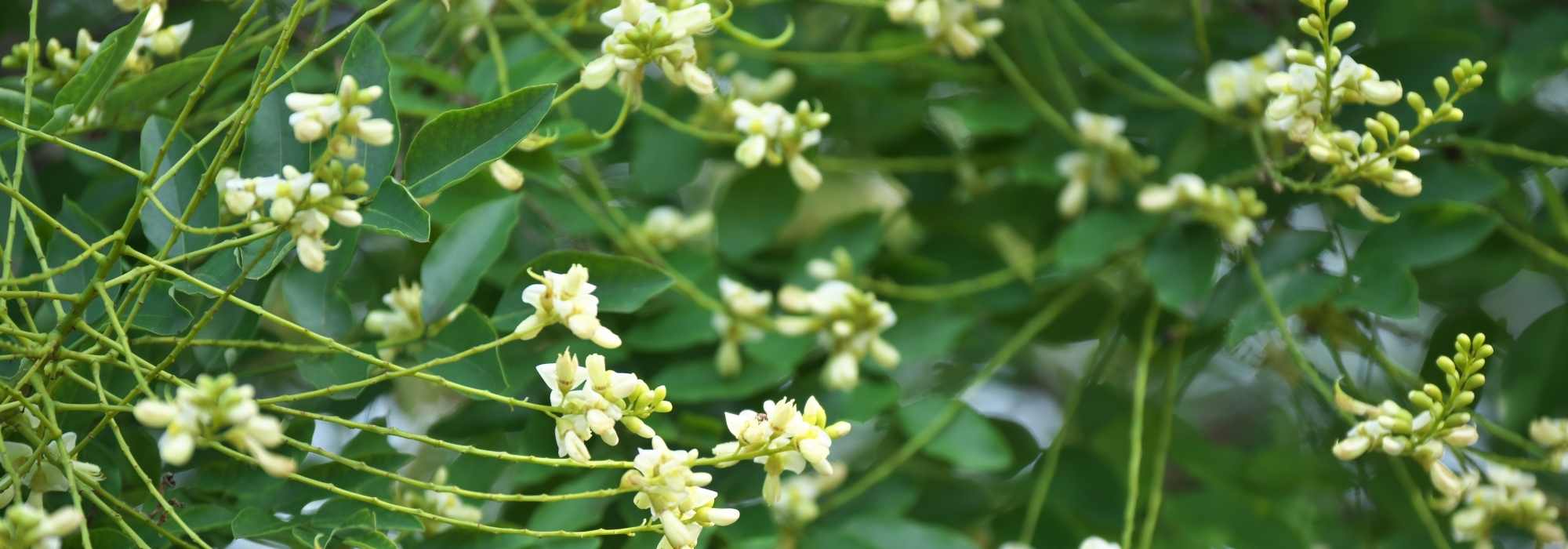
Sophora: planting, growing
Contents
Sophora in a nutshell
- Sophora is an ornamental tree or bush with light foliage beautifully divided into leaflets
- Depending on the species, it adopts a weeping, majestic, or prostrate habit
- Once mature, it rewards us with a spectacular flowering in white or yellow clusters, fragrant and highly melliferous, followed by string-like pods
- Hardy and easy to grow, it thrives in full sun in well-drained, even dry and poor soils
- With rapid growth, it is perfect as a specimen plant, in alignment as a tree, or in pots for dwarf sophoras
A word from our expert
Sophoras are ornamental trees or bushes valued for their light foliage, reminiscent of that of the false acacia. In warm summers and after about twenty years of cultivation, they reward us with a melliferous and fragrant flowering, in white clusters like the Sophora japonica, also known as the Japanese Pagoda tree, perhaps the most well-known, or yellow in the case of the Sophora microphylla ‘Sun King’.
Also discover the stunning variety Sophora japonica ‘Pendula’, appreciated for its beautiful weeping habit that provides dappled shade and makes an excellent shade tree in large gardens. There is also the dwarf Sophora, such as the ‘Little Baby’ variety, suitable for small gardens and container cultivation.
They form a tree ranging in height from 1.5 m to 20 m depending on the cultivars, making them suitable for alignment, in groves, or within a flowerbed, even in pots.
These are full sun plants, to be placed in a warm location. Hardy and easy to grow, they thrive in well-drained soil, even if dry and poor. Once established in the garden, they require very little maintenance.
Discover our Sophoras; they deserve a special place in your garden or on your terrace!
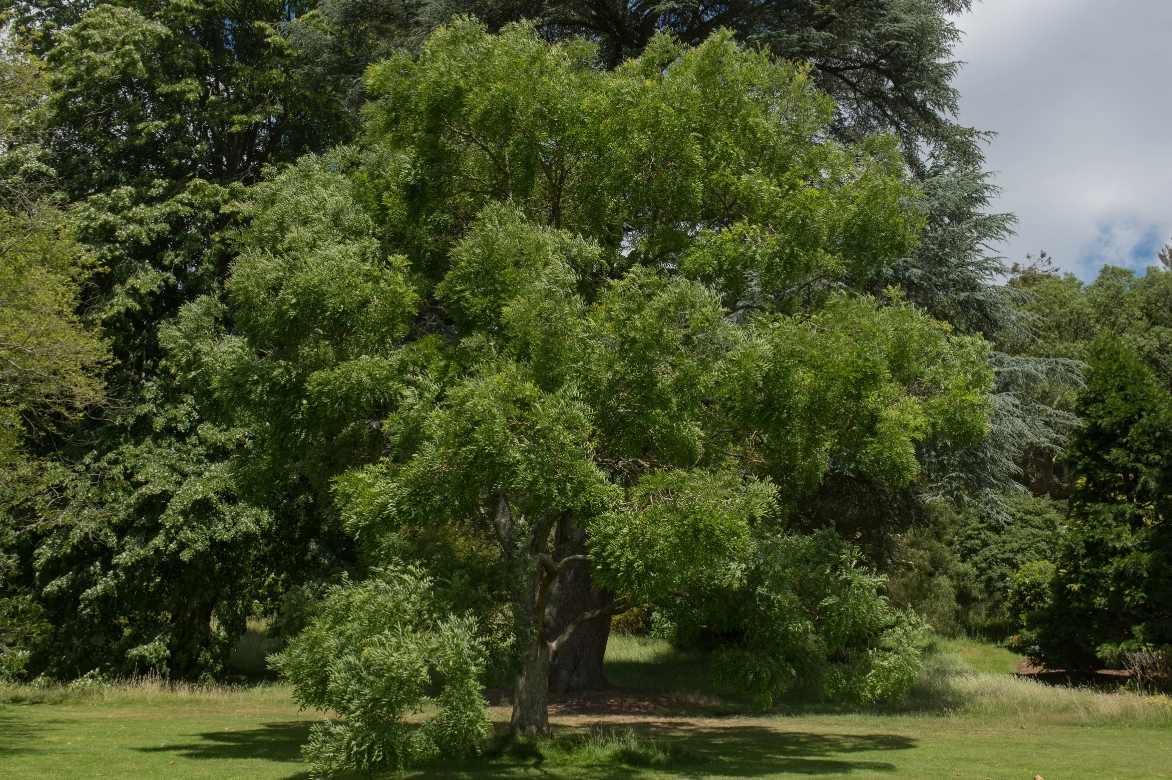
Sophora japonica
Description and botany
Botanical data
- Latin name Sophora
- Family Fabaceae
- Common name Sophora, Japanese pagoda tree
- Flowering spring or summer
- Height 1.50 to 20 m
- Exposure Sun
- Soil type Rich, light, well-drained
- Hardiness -15 °C
The Sophora is an ornamental tree or bush belonging to the Fabaceae family, like the Albizias, beans, peas, or wisteria. The genus comprises between 30 and 50 species of evergreen or deciduous trees and bushes, native to the temperate and warm regions of China, Korea, or New Zealand. In the wild, this bush can be found in various habitats ranging from coastal forests to arid plains, rocky slopes, or dry hills and undergrowth.
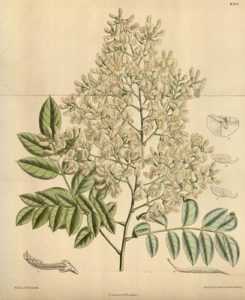
Sophora japonica, botanical plate
Among the most widespread is the Japanese sophora, Sophora japonica, also known as the Japanese Pagoda or Pagoda tree. It is a very beautiful tree for parks and large gardens, introduced to our Jardin des Plantes in Paris and the Château de Versailles in the mid-18th century. A remarkable old specimen can still be found at the Château de Montry in Île-de-France. It has produced several interesting cultivars such as the weeping sophora (Sophora japonica ‘Pendula’) or weeping pagoda tree, characterised by its long pendulous branches reaching the ground. Among other species, we also find Sophora davidii, or David’s sophora, which is a deciduous bush, and Sophora microphylla, the small-leaved sophora or “Kowhai”.
Their size varies depending on the species and cultivars, ranging from large trees to dwarf trees, from stout to slender. The Japanese sophora is a truly vigorous tree measuring 8 to 25 m high, with a spread of 10 to 15 m under optimal conditions, while Sophora microphylla ‘Sun King’, also known as ‘Hilsop’, maintains an average height of 3 m at maturity, whereas the variety ‘Little Baby’ will not exceed 1.25 m in all directions as an adult. In our latitudes, Sophoras tend to maintain reasonable proportions and not exceed 10 m in height.
The habit is regularly bushy and rounded in the Japanese sophora, but also varies according to the varieties or species. The Sophora japonica ‘Pendula’ has a pendulous, tiered, irregular habit, with branches that can measure up to 12 m long, while Sophora prostrata displays a prostrate and twisted habit.
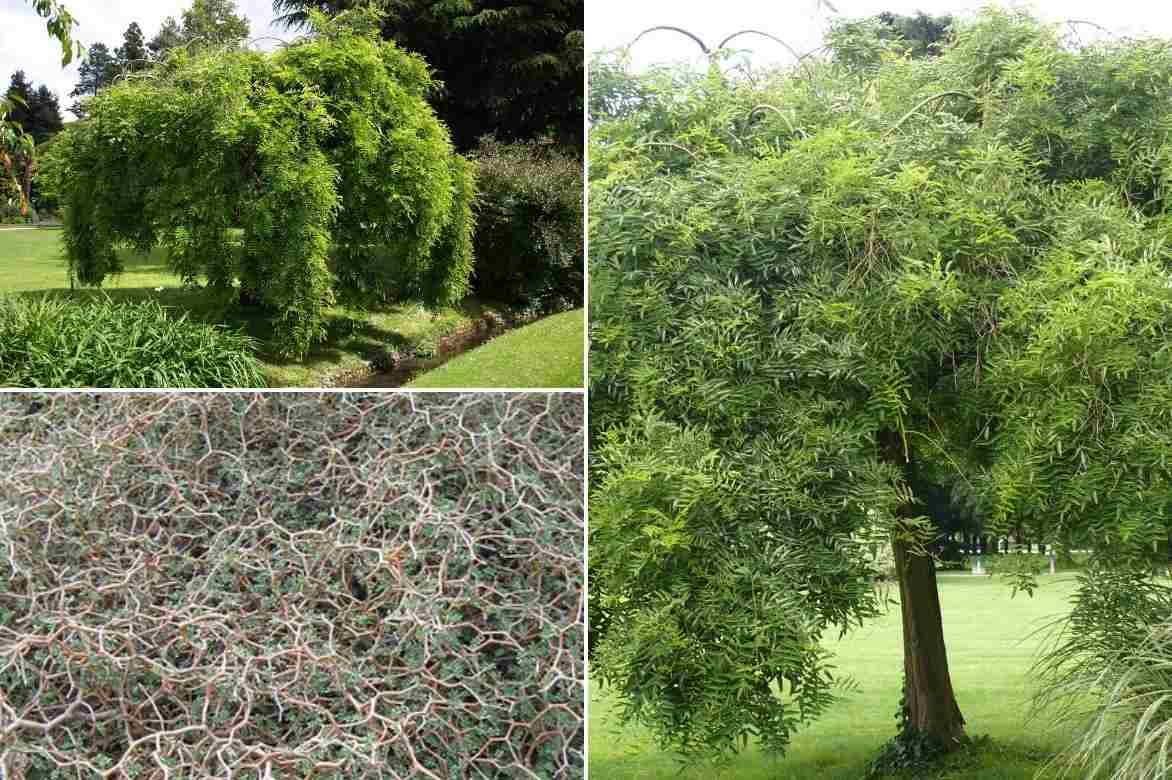
Top left Sophora pendula, bottom left Sophora prostata from the Jardin des Plantes in Paris (© Leonora Enking), and on the right Sophora japonica
Growth is generally rapid, and it has a beautiful longevity that can reach 500 years. Its roots are running, and like all Fabaceae, they have the ability to fix atmospheric nitrogen, which spares this plant from the need for nitrogen fertilisers.
The branches are pendulous, weeping, or grow in a zig-zag pattern. The branching is often twisted, and the fissured trunk often becomes tortuous with age. The twigs are characteristic of the Japanese sophora, with their green colour speckled with white lenticels in young trees.
As the Sophora is very close to Acacias and Albizias, it also has very decorative foliage, particularly light and resembling theirs. The foliage is evergreen to semi-evergreen depending on the severity of winter or deciduous. It appears late, in May, or even early June. It features alternate, pinnate leaves composed of lanceolate or rounded leaflets, measuring 7 to 25 cm long. They somewhat resemble fern foliage but can especially be confused with that of the false acacia. The number of leaflets (from 9 to 50) can vary depending on the varieties. Sophora prostrata is distinguished by its foliage divided into tiny leaflets, giving it the appearance of a bonsai.
They are bright green to dark green and shiny, or downy in Sophora microphylla. Sometimes the leaves fall before yellowing, as is the case with many nitrogen-fixing trees.
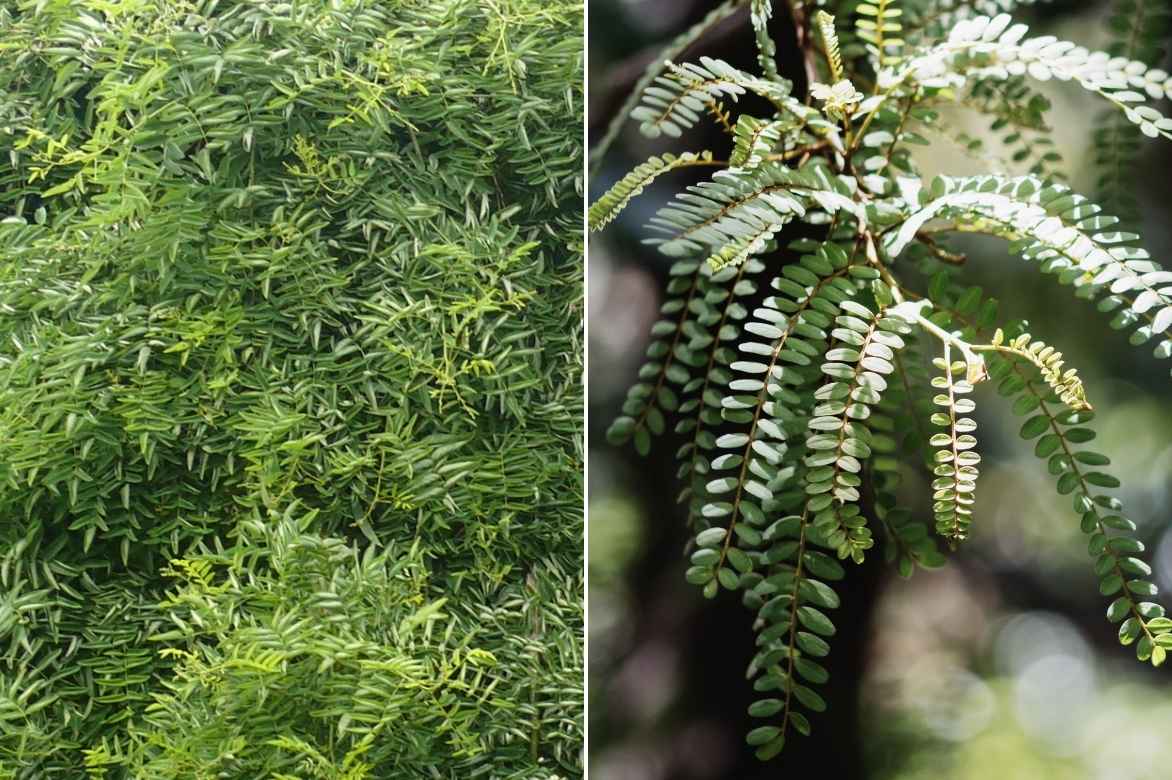
Foliage of Sophora japonica and Kowhai
Whether deciduous or evergreen, Sophoras are particularly floriferous shrubs. Flowering is rare and only occurs when the tree is about twenty years old and during long, hot summers. Flowering occurs about a month after leafing. Long-lasting, it takes place from February-March for the early dwarf Sophora ‘Little Baby’, and continues throughout the summer from August to October, depending on the regions and species.
It appears in the form of small flowers gathered in terminal panicles, either pendulous or upright, measuring 5 to 30 cm long. There are Sophoras with small white flowers and those with large yellow flowers. Small papilionaceous flowers or pea flowers, typical of the Fabaceae, cream or bluish white, or long bell-shaped flowers with curled yellow lobes compose the cluster. In New Zealand, the yellow flower of Sophora is the national flower.
The flowers of Sophoras are fragrant. They produce nectar and delight pollinating insects. This tree is sometimes nicknamed the “honey tree,” in reference to this flowering, which is as sought after by foragers as that of the false acacia, from which a highly prized honey is extracted.
From September-October, the tree produces fruits that are fleshy pods measuring 5 to 20 cm, initially green then brown, resembling the shape of the seeds. They evoke strings of pearls or rosaries. You can collect the seeds and store them for sowing in spring.
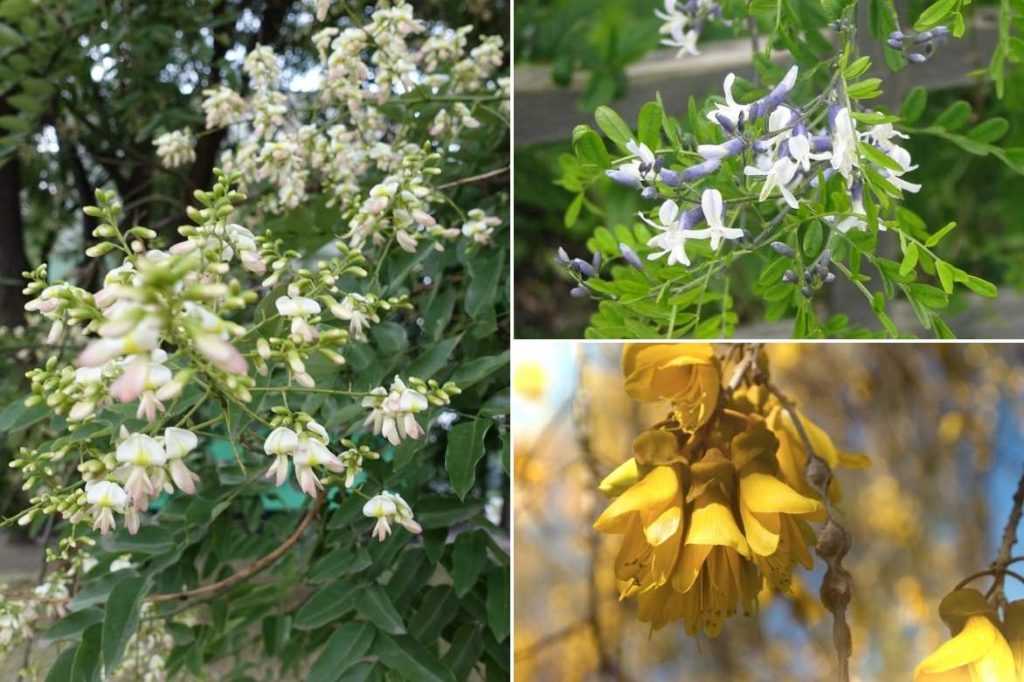
Flowering of Sophora japonica (left), Sophora davidii (© Peganum) top right, and Sophora microphylla (bottom right)
Read also
10 shade treesMain species and varieties
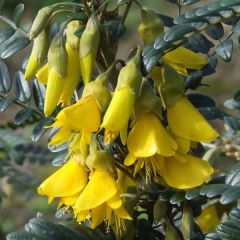
Sophora microphylla Sun King
- Flowering time April to June
- Height at maturity 3 m
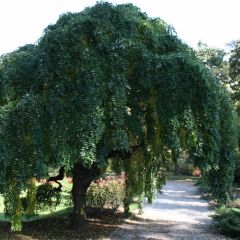
Sophora japonica Pendula
- Flowering time September to November
- Height at maturity 3 m
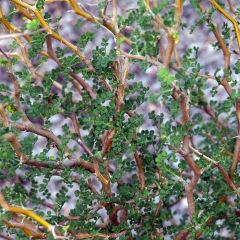
Sophora prostrata Little Baby
- Flowering time March, April
- Height at maturity 1,25 m
Discover other Sophora
View all →Available in 1 sizes
Available in 2 sizes
Available in 2 sizes
Available in 1 sizes
Available in 2 sizes
Planting
Where to plant?
Most Sophoras are hardy trees, tolerating cold temperatures of around -15 to -20°C. This tree withstands cold winds, early or late frosts, and potential droughts relatively well once established, making it suitable for cultivation in most of our regions. However, as its root system is shallow, it is better to place it in sheltered areas away from excessively windy conditions that could uproot it. The Sophora microphylla, on the other hand, can tolerate sea spray, which is not the case for other species.
It is a sun-loving tree that enjoys hot summers. Therefore, it should be planted in full sun, and it can tolerate partial shade in our most exposed regions. The Sophora japonica ‘Pendula’ provides excellent shade and is well-suited for the southern parts of our country.
Not very demanding, it is content with any soil, even dry and poor. However, it will reach its full potential in fertile, deep, cool, and well-drained soil, with a slightly acidic tendency.
It is sensitive to very calcareous soils and overly compacted, waterlogged soils that suffocate the roots during the wet season.
It tolerates urban pollution, making it an excellent tree for lining streets in the city. It also looks wonderful when planted alone or within a shrub border. Some varieties are suitable for pot cultivation for your balconies and terraces.
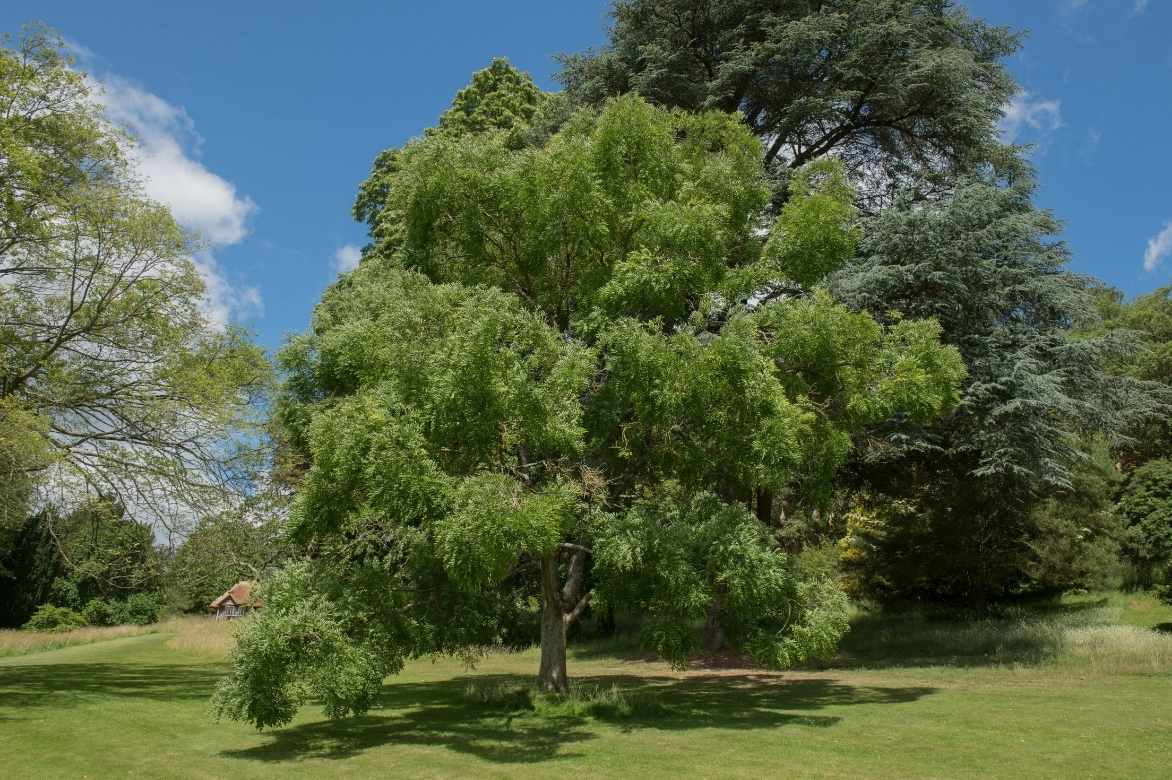
Sophora japonica
When to plant?
Plant in March-April, at the latest in May, when all risk of frost has passed, or in autumn, from September to November, to ensure deep rooting before winter.
How to plant?
In the ground
It is generally recommended to plant the Sophora alone to appreciate its beautiful silhouette. If you wish to plant it in a grove or in a line, ensure there is sufficient distance between two trees.
- Dig a planting hole two to three times the size of the root ball, at least 80 cm in all directions
- Feel free to add gravel or pumice at the bottom of the hole to improve drainage
- Place the root ball in the planting hole
- Install a stake
- Backfill with the garden soil removed, mixed with good compost
- Water generously, then regularly to encourage recovery
In a pot
Modest-sized Sophoras make a stunning display in a large pot on the terrace, which should be stored in very cold regions.
- Choose a large pot and place a drainage layer at the bottom
- Plant the tree in a substrate composed of 50% garden soil and 50% potting soil with a bit of coarse sand
- Water regularly throughout the growing season, reducing water supply in winter
- Store your Sophora during extreme cold in a very bright, unheated space, protected from frost
Read also
Grafting trees: different techniquesMaintenance, pruning and care
To encourage its establishment, water generously during the first year, especially during hot and dry periods. We recommend watering 1 to 2 times a week. After the first summer following planting, it will rely on rainwater and will not require additional watering. You can also apply mulch around the base of the tree to keep the soil cool. The sophora does not need fertiliser.
Pruning the sophora is not necessarily required. If you do wish to intervene to reduce the branches, carry out maintenance pruning after flowering:
- Simply trim any dead or diseased wood
- Avoid cutting large branches
- Remove any tangled or crossing branches within the canopy
How to prune a weeping sophora?
- Prune short in the early years to strengthen the framework
- Remove any shoots that appear on the trunk
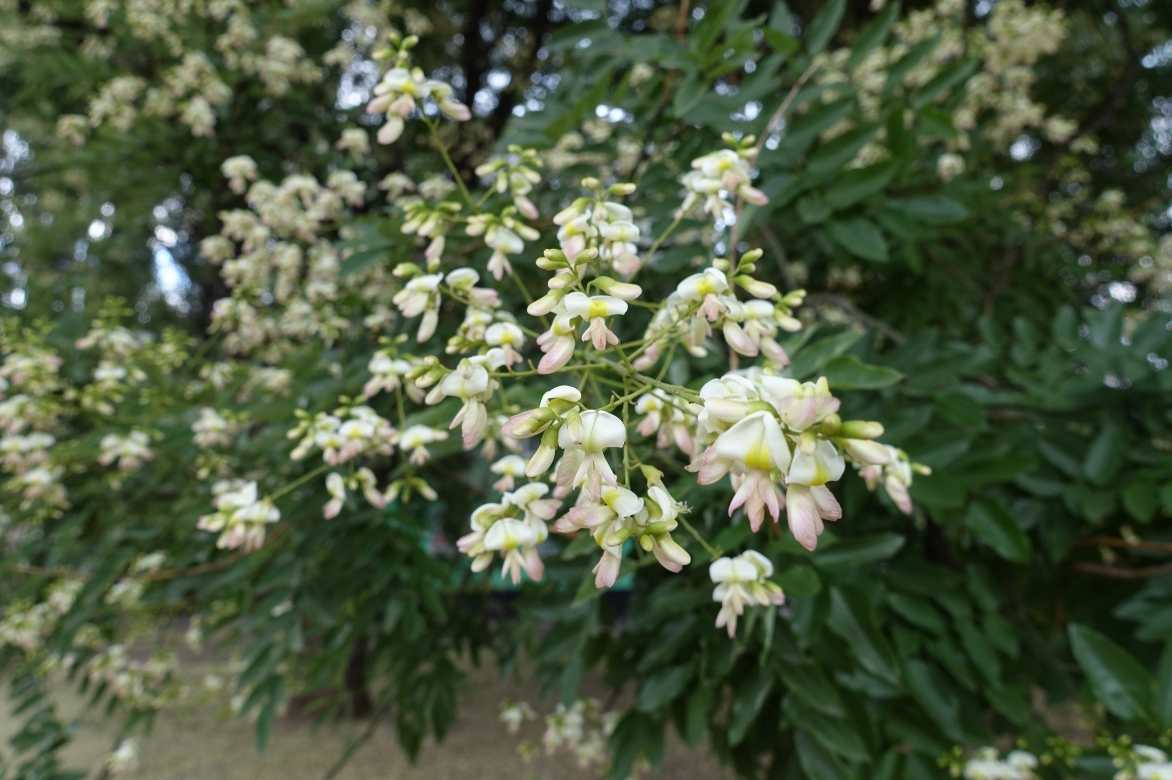
Flowering of Sophora japonica
Diseases and potential pests
As for diseases, the Sophora is not afraid of anything. Sometimes, it is the mealybugs that target it. You can treat it by spraying black soap on the foliage.
Propagation
Sophora is propagated by sowing, which is easier to achieve than grafting.
Sowing
If you already have a specimen in the garden, collect the seeds present in the dried pods in autumn. The seeds are sown in spring after being abraded with sandpaper. Sow the seeds on a layer of potting soil and then cover with 2 cm of soil. Place the seedlings in a bright, warm, and sheltered location (at least 18 °C). Keep the substrate moist until germination. Transplant the seedlings into individual pots when they are large enough to handle. Transplant into the ground when the seedlings are at least 50 cm tall.
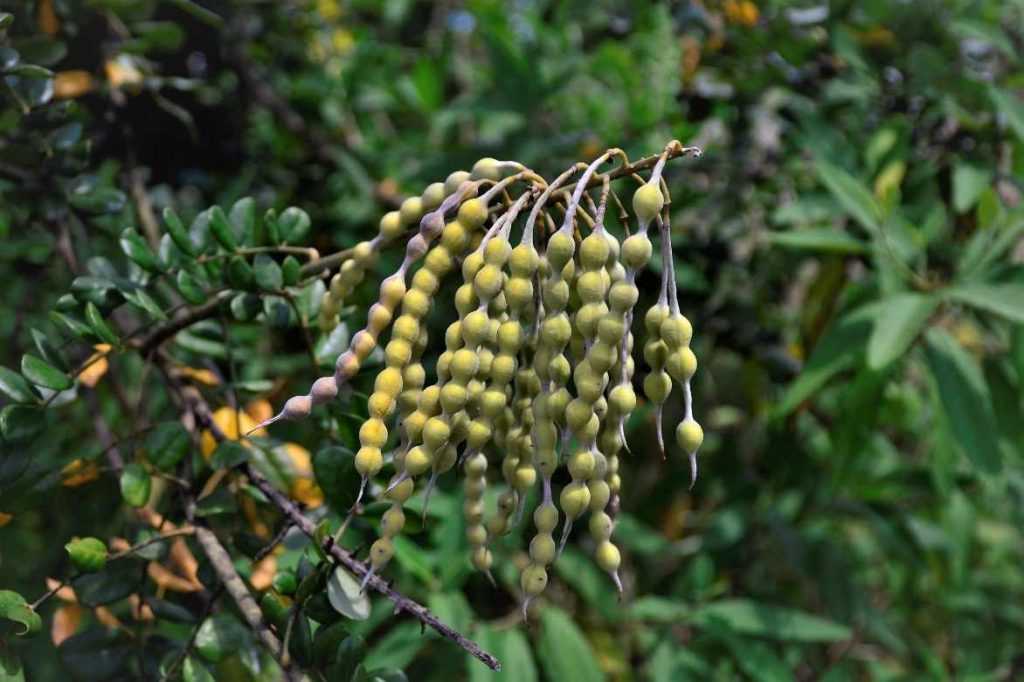 Pods of Sophora tomentosa</caption]
Pods of Sophora tomentosa</caption]
Pairing ideas
According to the varieties, Sophoras are suitable for both small and large gardens. They naturally find their place as a specimen tree, like the Pagoda Tree or Sophora japonica ‘Pendula’. As they tolerate pollution well, they are ideal for urban gardens.
They also thrive in a flowering grove and in poor soil, associated with other low-maintenance and highly ornamental trees or bushes like forsythias that bloom at the same time as the earliest sophoras. They offer a beautiful complement to shrubs like broom, laburnum (Laburnum anagyroides), and with early-flowering yellow perennials like spurge, or a coronilla, a small bush belonging to the same family. Surround them with spring bulbs like daffodils or botanical tulips.
You can provide them with a backdrop of evergreen shrubs or conifers like cypress, thuja, yew, or junipers, or with Physocarpus that will contrast with their green leaves.
Dwarf forms like ‘Little Baby’ can accompany colourful foliage perennials like Heucheras, grasses, or Phormiums for an exotic touch in a zen-inspired bed.
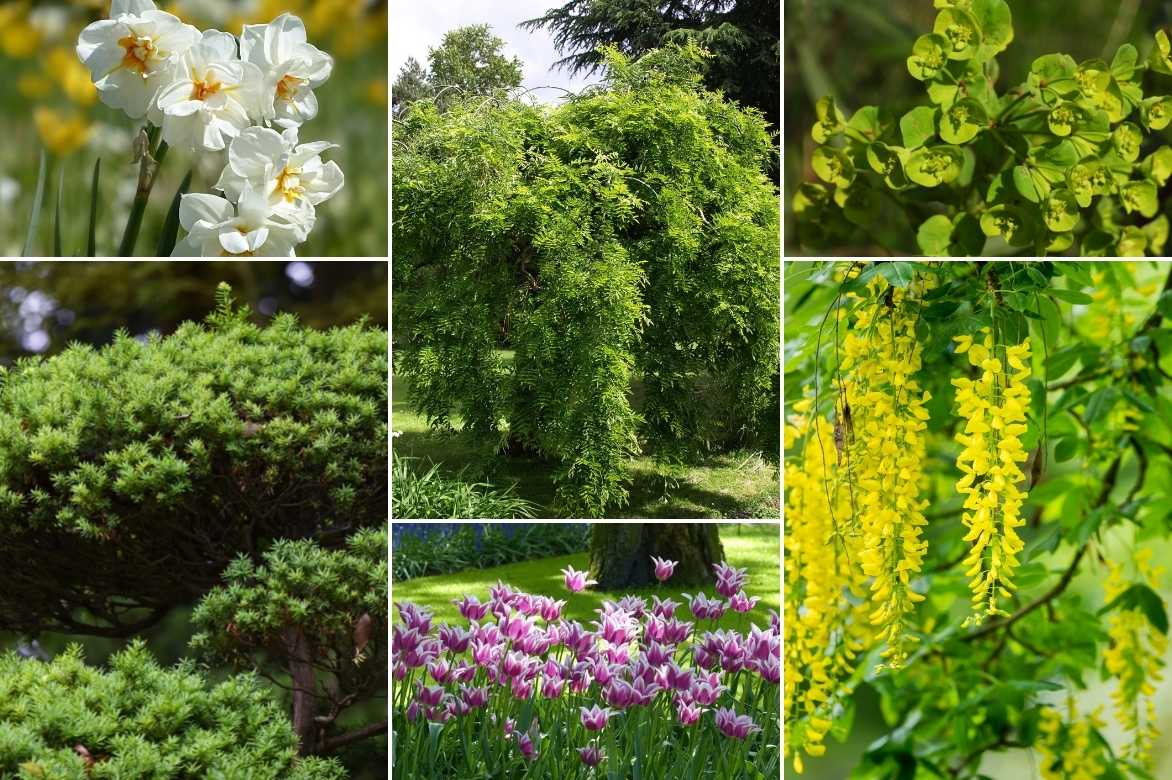
A Sophora japonica pendula, associated with daffodils and ‘Ballade’ tulips, a dwarf yew, a spurge, and a laburnum
Did you know?
Japanese sophora has a history as a park and street tree. In the past, the wood of Japanese sophora was used for constructing frameworks, and a yellow dye was extracted from its floral buds to dye bristle (Sophora would mean “sulphur yellow”). In Māori pharmacopoeia, this tree is renowned for its anti-inflammatory and antiseptic properties. All parts of the plant are purgative.
Be cautious of the presence of alkaloids in Sophora microphylla, which make the plant toxic.
Useful resources
- Discover our range of Sophoras
- Article: Trees that thrive in full sun exposure
- Article: Trees with an umbrella habit
- Subscribe!
- Contents


































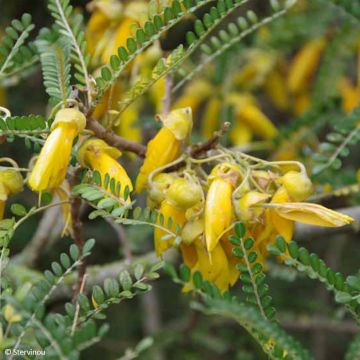
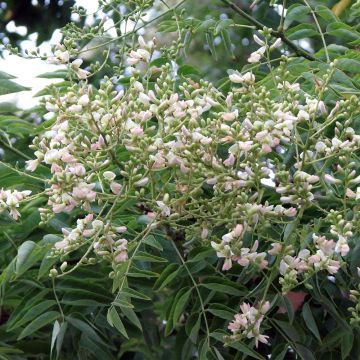
Comments